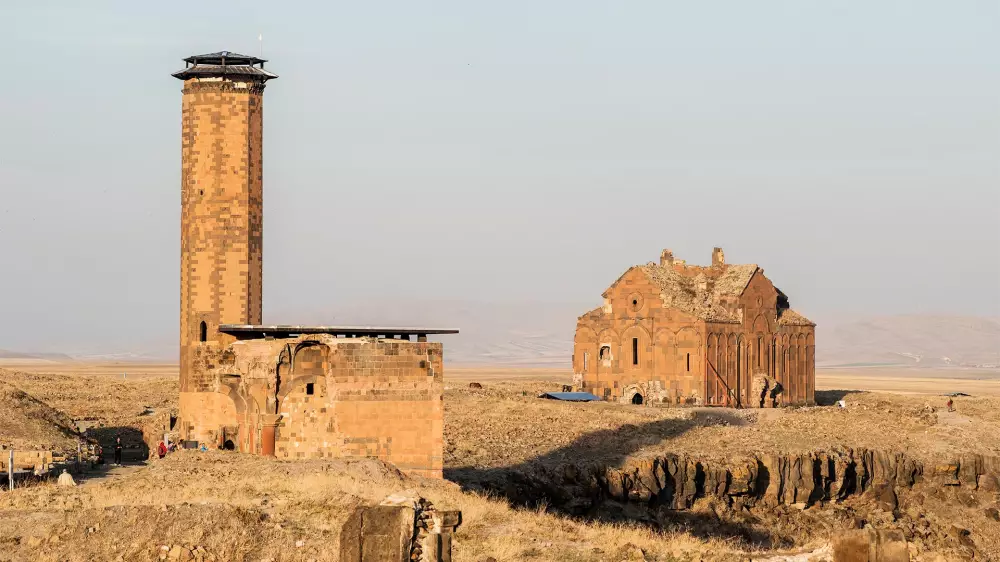
Dusty Shelves of Antiquity: Libraries of Pergamon and Celsus
Table Of Contents
Pergamon and Celsus from Ancient Libraries
Libraries, in their simplest definition, are institutions where books have been preserved for centuries in order to provide information. The functions of these institutions have increased over time and therefore they have been divided into different categories. Today, we witness different types such as public, private or national libraries. So, how was it in ancient times? We wanted to evaluate this subject by considering our own country. Therefore, today, we will touch on Pergamon and Celsus from ancient Anatolian libraries. Thus, you will both witness the firsts of our country and see the differences between ancient and modern libraries.
Let's Take a Brief Look at the Development of Libraries
Libraries have had different functions throughout history such as storage, book cases, and bookstores. We know that the first libraries date back to the Sumerians. These institutions, which we can call more archives in ancient times, hosted cuneiform clay tablets containing information written as a result of commercial activities. Clay, one of the oldest materials used by humans, is a type of soil that softens and flexes when mixed with water, and thus can be easily shaped. These conditions were appreciated by humans, who were still unaware that they would rule the world for centuries as a result of the system they would create, and clay began to be used. Tablets were formed from clay dough and writings were written on the dough with pens called ‘’stylus’’. These pens were obtained from the reed plant… The tablets were then left outside to dry. It is also known that the tablets were cooked to increase their durability. The texts found in places we call archives in ancient times were prepared in exactly this way. We know that there were many tablets in the libraries of the Assyrian period as we mentioned. Their content included not only official and private correspondence, but also scientific and literary texts.
The real libraries began to form after the discovery of papyrus and parchment. Papyrus paper was obtained from the papyrus plant grown in Ancient Egypt in 3000 BC. It is known that this type of paper was used for a long time. Until its rival parchment appeared... Parchment was discovered in Pergamon (Bergama) in the 2nd century BC and its main material was leather. Parchment, which is still a brand of the Bergama district today, was made using sheep, goat, calf and kid skin. With its discovery, it replaced papyrus and provided enrichment not only in terms of libraries but also in economic terms. After various information was written on these papers that we mentioned, books that were bound with wooden covers and called codexes emerged. Of course, these books needed a house both for their protection and to be examined when necessary. We know that the name "library" in Turkish is derived from Arabic and Persian words meaning house of books. The words "kütüb" meaning books and "hane" meaning house were combined. We can consider the Hellenistic and Roman periods as the golden age of libraries. The ancient libraries that we will talk about in a moment also date back to these two periods.
Pergamon Library That Lives in Hearts
Pergamon, today known as Bergama, is the second largest library in ancient times. The first is in Alexandria. Pergamon Library was built in the Hellenistic period. Although its construction began during the reign of Eumenes II, we understand from ancient sources that it was only completed during the reign of Attalos II, the emperor's brother. During this period when papyrus was used, the Egyptians decided not to send paper to Pergamon. Why?
The answer is quite simple; they did not want the Library of Alexandria, which maintained its throne during the period with its size and variety, to have a rival. However, it seems that they underestimated their rivals. The king of Pergamon, who did not like the situation he was in at all, wanted a new type of paper to be invented. This is how parchment was invented. Being more durable than papyrus made parchment more attractive and its use became widespread over time. The library, where many scientists were trained, hosted 200,000 works, including scrolls and codices. Thus, it played an important role in making Pergamon one of the important cultural centers.
Unfortunately, despite having a sacred duty such as education, it could not accept its fate. According to legend, the Library of Alexandria was destroyed by fire as a result of the occupation of the region by the Roman Julius Caesar. It was up to Marcus Antonius to console the Egyptian Queen Cleopatra, who was deeply saddened by the situation she encountered. Antonius, who wanted to impress the queen, sent the works in the Pergamon Library to Egypt. The structure itself, just like the It was burned during a war like this and was buried in the dark pages of history.
The Legendary Celsus Library
According to the results obtained from ancient sources, the Ancient City of Ephesus was founded in the middle of the second millennium BC. We know that the Ancient City of Ephesus, located in the Selçuk district of Izmir today, dates back to the Polished Stone Age. However, we can say that the Hellenistic and Roman periods were the turning points of Ephesus. It has carved its name into history as the capital of the province of Asia and the largest port city with a population of approximately 200,000. The Ancient City of Ephesus, which is very important for the history of Anatolia, was included in the UNESCO World Heritage List in 2015.
The Celsus Library is one of the largest and most important ancient libraries in Anatolia after Pergamon. It was built in 135 AD in the name of Tiberius Julius Celsus Polemaeanus, the former proconsul, or governor, of Asia. The person who wanted it built was Gaius Julius Aquila, the son of the old Roman official we mentioned.
Aquila had such an important structure built with his own means. We understand this from an inscription on the eastern facade that reads, “For Tibernus Julius Celsus Polemaeanus, proconsul of Asia, his son, consul Tiberius Julius Celsus Polemaeanus, established the Celsus library building with all its decorations, works of art and books with his own fortune.” It is known that the supply of books to libraries during the Roman period was done through donations or inheritance. Aquila also bequeathed his money for the protection of Celsus and the purchase of books. The use of papyrus continued during this period. Although it was discovered, parchment began to become widespread in the 3rd century AD. The Celsus Library, which has an important place both as the cultural center of Ephesus and in terms of the history of libraries, continued to serve for 150 years, but was severely damaged by an earthquake in the Middle Ages. After years of effort, the ruins of the library, which had become a pile after carrying all the burden of the past on its shoulders, were brought together and took its current magnificent form.
The striking elements of the structure are the 4 female statues at the entrance. Each of these statues is a personalized version of a concept. These statues in the Celsus Library of the Ancient City of Ephesus are copies of the originals. The originals of the works are in the gallery dedicated to Ephesus in the National Bibliotheke in Vienna.
The concepts they represent:
Sophia Kelsoi: The wisdom of Celsus.
Arete Kelsoi: The virtue, virtue of Celsus.
Ennoia Philippoi: Love of understanding, thought, common sense.
Epistheme Kelsoi: The knowledge of Celsus.
Ancient libraries contributed to the development of civilizations by providing the education of many scientists and philosophers. Unfortunately, they have been lost to history due to various reasons such as the change of the administrative system or the civilizations that ruled the region. However, as the level of civilization increased, libraries with more capacity and functions continued to be built. Today, we can easily access many libraries not only physically but also in the digital world that we are always a part of. In this case, our duty is to reject the laziness that comes from convenience and to continue development under all circumstances.
Written by: Berfin Aktaş



